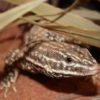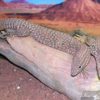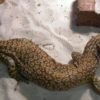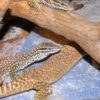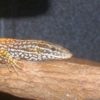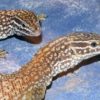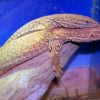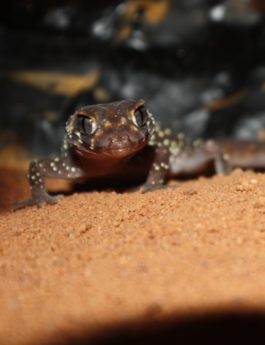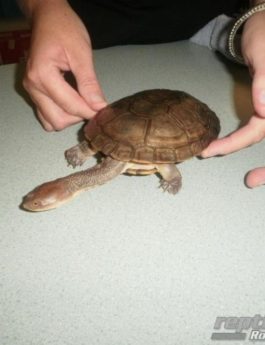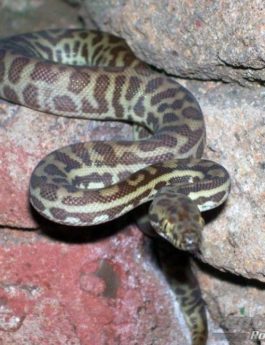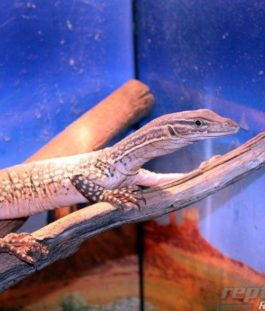Three subspecies recognised. V. a. acanthurus (Boulenger, 1885) Medium-sized robust monitor with thick, strongly spinose tail; depressed at base and round to triangular in cross-section distally. Ground colour black, dark brown to dull or rich reddish brown, often paler on vertebral region. Pattern usually prominent throughout most of range, becoming obscure and flushed with red south-westwards. Numerous transverse rows of pale reddish, yellow to cream ocelli extend over back, flanks and occasionally top of neck. Broad pale-edged dark reddish brown to black stripe extends from snout through eye to forelimb.
Shelters in rock crevices, beneath abandoned termitaria or in shallow burrows excavated beneath rocks, logs or dense low vegetation. Subhumid to arid north-western two-thirds of Australia. Favours hard soils and rocky areas supporting woodlands and shrub lands with dominant ground cover of tussock or hummock grasses. V. a. insulanicus is known only from islands of north-western NT., including Groote Eylandt, and Guluwuru and Marchinbar Islands in the Wessel Group. V. a. acanthurus occupies remainder.
Terrarium: there are several terrariums of different sizes available, the required size will vary based on number of and age/size of the Ridge-Tailed Monitor. Terrariums should be large enough to maintain a correct thermal gradient in ambient air temperatures, this means that the Monitor can regulate its body temperature throughout the enclosure. For a single average size mature Ridge-Tailed Monitor, we wouldn’t recommend anything smaller than 90x45x60cm (WxDxH), and for a pair of adult Monitors we would recommend a terrarium size of 120x60x60cm (WxDxH) as there needs to be enough room for them to chase their food and have their own basking spots.
Lighting & heating: Ridge-Tailed Monitors are a ‘Day Active’ lizard, meaning they are Diurnal and therefore require high spectrum UVB lighting as well as an intense basking heat source. There are a number of ways to provide UVB, fluorescent 10.0 spectrum tubes or bulbs will provide UVB, a ‘daylight basking’ heat globe will have to be used in conjunction. A mercury vapour globe will provide intense UVA & UVB light, mercury vapour globes are in our opinion superior to fluorescents as it is a longer lasting globe with more intense UVB output, however they cannot be used with a thermostat so work better with a larger enclosure that will easier maintain a thermal gradient. During the day, you want to achieve a basking ‘Hot Spot’ of 38°C and an air temperature ranging from 38°C in the hot end, and down to 25°C in the cool end. A heat rock or heat tile should be provided as tummy heat to help with digestion, this can also be used as a night time heat source. To monitor the temperatures inside the enclosure a thermometer should always be used.
Furnishings: an elevated basking area can be provided using logs, vines or hammocks. Artificial foliage throughout the enclosure will allow the Ridge-Tailed Monitor plenty of hiding spots and coverage, a water bowl placed in the cool end, and red sand kept at the correct moister is our recommended substrate.
Food in captivity: Ridge-Tailed Monitors will eat a variety of insects, including crickets, roaches and silk worms. Small mice and raw mince should also be included into their diet in moderation. Food items will need to be dusted with calcium and vitamin supplements.
The essentials:
- Terrarium of appropriate size
- High spectrum UVB lighting
- Daytime Basking globe
- Thermometer
- Ground heat
- Water bowl
- Substrate
- Branches/Vines
- Foliage for shelter
- Calcium and vitamin supplements


